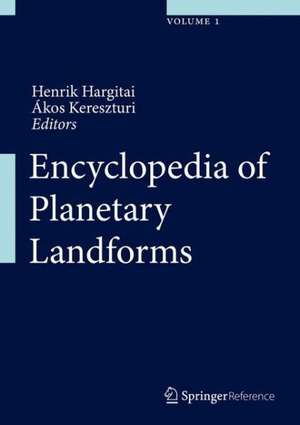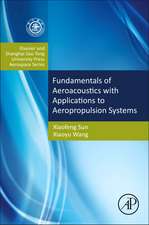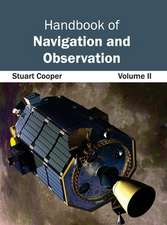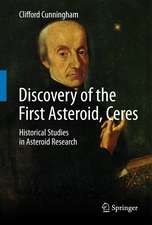Encyclopedia of Planetary Landforms
Editat de Henrik Hargitai, Ákos Kereszturien Limba Engleză Hardback – 5 noi 2015
More than 600 named planetary feature types are discussed in the encyclopedia, covering a wide range of scales--from micrometers to global scale--and also include landform types (structural or topographic features), parts of landforms, terrain types or surface textures, surface patterns, and features identified at wavelengths extending from visible to radio waves (e.g., albedo, thermal infrared, and radar features). The book covers features formed by impact, aeolian, magmatic, volcanic, tectonic, fluvial, lacustrine, marine and coastal, mass movement, sedimentary, desiccation, liquefaction, periglacial, glacial, nival, sublimation, collapse, weathering, and selective erosion or other, including complex processes.
Depending on the information and formation models available, the entries have different approaches. Some of them discuss their subject from the point of view of the inferred process or origin, others are morphology or description-based. As a default, entries focus on extraterrestrial landforms, while also mentioning their proposed terrestrial analogs. Most planetary landforms are not body-specific, but some have no known terrestrial counterparts. Named historic (obsolete) landform types are also included to provide reference for previous key research papers.
To make it easier to find features with related origins, the encyclopedia contains entries that list landforms based on their formative processes. It also lists body-specific features on Mercury (5 feature types), Venus (40), the Earth (13), the Moon (15), Mars (87), Io (7), Europa (17), Callisto (7), Titan (9), Triton (2), mid-sized satellites (8), and small bodies (3). Also included are entries on the 51 planetary feature descriptor terms approved by IAU.
Preț: 3178.42 lei
Preț vechi: 3876.13 lei
-18% Nou
Puncte Express: 4768
Preț estimativ în valută:
608.38€ • 661.06$ • 511.37£
608.38€ • 661.06$ • 511.37£
Carte disponibilă
Livrare economică 31 martie-14 aprilie
Preluare comenzi: 021 569.72.76
Specificații
ISBN-13: 9781461431336
ISBN-10: 1461431336
Pagini: 2460
Ilustrații: XXXVII, 2460 p. 1862 illus., 575 illus. in color. In 3 volumes, not available separately.
Dimensiuni: 178 x 254 x 146 mm
Greutate: 5.15 kg
Ediția:1st ed. 2015
Editura: Springer
Colecția Springer
Locul publicării:New York, NY, United States
ISBN-10: 1461431336
Pagini: 2460
Ilustrații: XXXVII, 2460 p. 1862 illus., 575 illus. in color. In 3 volumes, not available separately.
Dimensiuni: 178 x 254 x 146 mm
Greutate: 5.15 kg
Ediția:1st ed. 2015
Editura: Springer
Colecția Springer
Locul publicării:New York, NY, United States
Public țintă
ResearchCuprins
Planetary Landforms.- Maps Section.
Notă biografică
Henrik Hargitai (Ph.D., 2007) is a planetary geomorphologist, media historian, and senior lecturer at the Eötvös Loránd University, Budapest, Hungary. He has Ph.D. in Earth Sciences and Philosophy (Aesthetics). He teaches planetary geomorphology (since 2002), planetary cartography, typography, and media history. His study fields include the distribution and morphology of the mountains of Io; lake ice and snow landforms; impact morphology; and the history and localization of the planetary nomenclature. He participated in two Mars Desert Research Station simulations. He is the chair of the ICA Commission on Planetary Cartography and editor of the Central European edition of the series of “multilingual maps of terrestrial planets and their moons” and its 2014 special edition for children. He is the producer of numerous public outreach programs in planetary science for radio.
Ákos Kereszturi (Ph.D.) is a geologist, working on planetary science and astrobiology as researcher at the Research Center for Astronomy and Earth Sciences, where he leads the Astrophysical and Geochemical Laboratory. He is member of the NASA Astrobiology Institute TDE Focus Group, teaches planetary science at Eötvös Loránd University, serves on the editorial board of two international and one national journals, is vice president of the Hungarian Astronomical Association, and contributes in the popularization activity of the Polaris Observatory in Budapest. His main research area is the geology of Mars, Europa satellite, craters of Mercury, water in the Solar System and beyond, Mars analog field work, survival of extremophile organisms, analysis of asteroid surfaces, and geological history based on mineral characteristics of meteorites.
Ákos Kereszturi (Ph.D.) is a geologist, working on planetary science and astrobiology as researcher at the Research Center for Astronomy and Earth Sciences, where he leads the Astrophysical and Geochemical Laboratory. He is member of the NASA Astrobiology Institute TDE Focus Group, teaches planetary science at Eötvös Loránd University, serves on the editorial board of two international and one national journals, is vice president of the Hungarian Astronomical Association, and contributes in the popularization activity of the Polaris Observatory in Budapest. His main research area is the geology of Mars, Europa satellite, craters of Mercury, water in the Solar System and beyond, Mars analog field work, survival of extremophile organisms, analysis of asteroid surfaces, and geological history based on mineral characteristics of meteorites.
Caracteristici
Gives a widespread and comprehensive overview of the different types of planetary surface features, including their formation and evolution Covers all solid-surface planetary bodies and moons in the Solar System, in an alphabetical approach Includes original figures, line drawings, annotated photomosaics, and the latest spacecraft images, thematic, and distribution maps Includes supplementary material: sn.pub/extras












